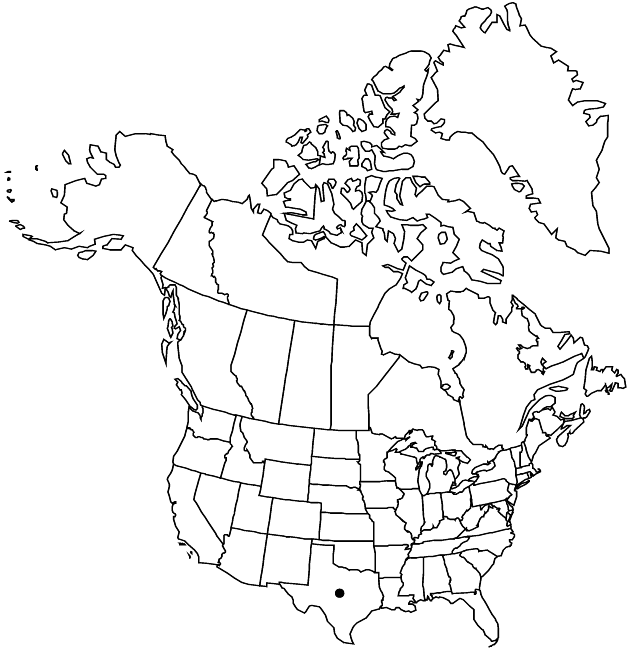Chaetopappa bellidifolia
Wrightia 1: 71. 1946.
Common names: Edwards lazy daisy
Endemic
Basionym: Keerlia bellidifolia A. Gray & Engelmann Proc. Amer. Acad. Arts 1: 47. 1848
Annuals, 8–40 cm, eglandular or minutely glandular; taprooted. Leaves not densely overlapping, proximal and mid cauline blades oblanceolate to oblong-spatulate, 7–35 × (1–)2–10 mm, herbaceous, bases not clasping, flat, faces glabrous or sparsely strigose. Involucres narrowly to broadly conic, 3.8–4.5 × 1.5–2.5 mm. Ray florets 6–15; corollas violet to blue or lavender. Disc florets 8–22, bisexual or functionally staminate. Cypselae (ray) 1.5–2.2 mm, 10-nerved, faces strigose; pappi minute, thickened rings less than 0.1 mm, in 1 series. 2n = 16.
Phenology: Flowering late Mar–Jul.
Habitat: Open habitats, sandy, clay, or rocky soils, commonly in calcareous alluvium, stream bottoms, limestone hills, usually with juniper and oak
Elevation: 200–700 m
Distribution
Loading map...

Tex.
Discussion
Selected References
None.
Lower Taxa
None.